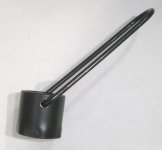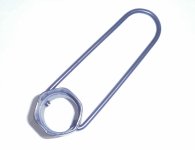So I have been using pliers to lock my dies in place since I don't have a 1-3/16 or 1-1/8 open end wrench...searched the web and found a small box wrench with both sizes, but it was one off and no longer available...the thought of buying a couple large, expensive wrenches just bugged me , but so did having a bunch of different sized tools laying around the bench. I searched online and came up with this. 8 inches long adjusts up to 1-3/8"...probably cheaply made, but it isn't like i am torquing cylinder head bolts. Arrives tomorrow and I will see how it goes.

Robert

Robert


